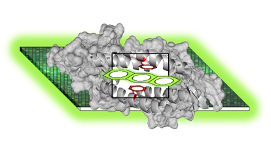

Sara H. Mejias
Highly emissive and photostable light-emitting devices based on artificial fluorescence proteins
Uppsala University // Uppsala, Sweden
Q&A Session I // Wednesday, October 28 // 6.15 pm – 7 pm (CET)

I present a novel strategy to generate light-emitting devices based on synthetic organic dyes and proteins. Protein environment is a complex solvent. In Nature, light-harvesting units are located in tight protein pockets which reduce the non-radiative losses of chromophore excitations and complex protein-dye interactions stabilize the excited states. This environment allows to have energy transfer of the excitation over the chromophores with high quantum efficiency. Inspired by Nature, we embedded synthetic organic dyes in protein pockets to generate highly emissive and photostable artificial fluorescence proteins. Our approach takes full advantage of the photophysics of the known synthetic organic dyes and protein design to generate artificial fluorescence proteins with desired properties. As scaffold, we use LmrR protein (Figure 1). LmrR has a hydrophobic pocket which makes its structure ideal to allocate organic dyes. We exploited LmrR tolerance for mutations to study the impact of different amino acids in the photoproperties of the dye. The LmrR-dye complex is used to generate solid films. This bottom-up approach allows us to generate emissive films with higher quantum yield and photostability than the one generated using only the dye. This work shows the huge potential of our fluorescence protein design strategy to generate improved light-emitting devices.

Figure 1. Spaced filled representation of the LmrR protein (in grey). Amino acids in the central part of the protein are highlighted in red and the dye, in the LmrR pocket, is represented as planar conjugated system in green. Behind the protein, emissive film representation formed using LmrR-dye complex.









